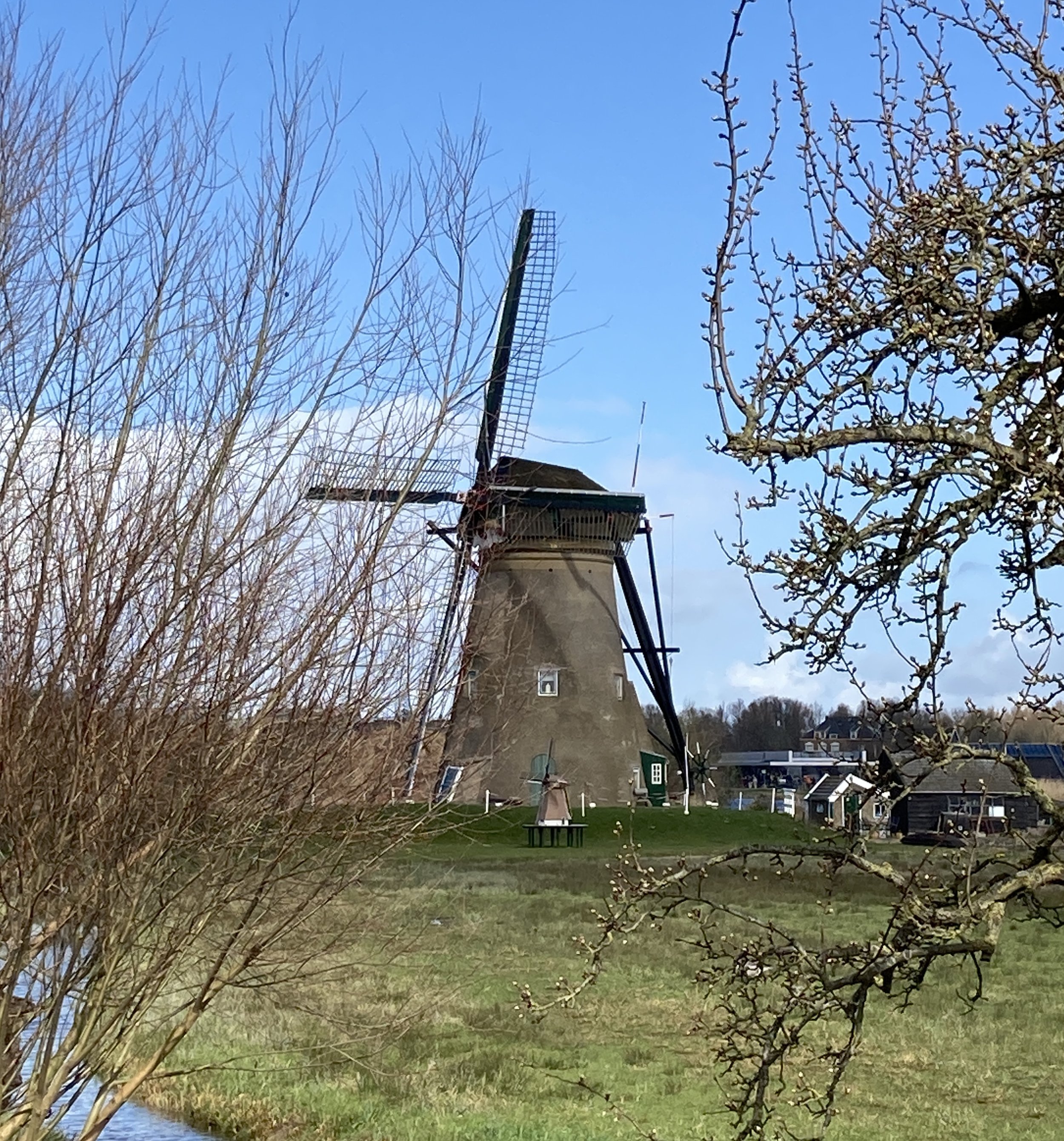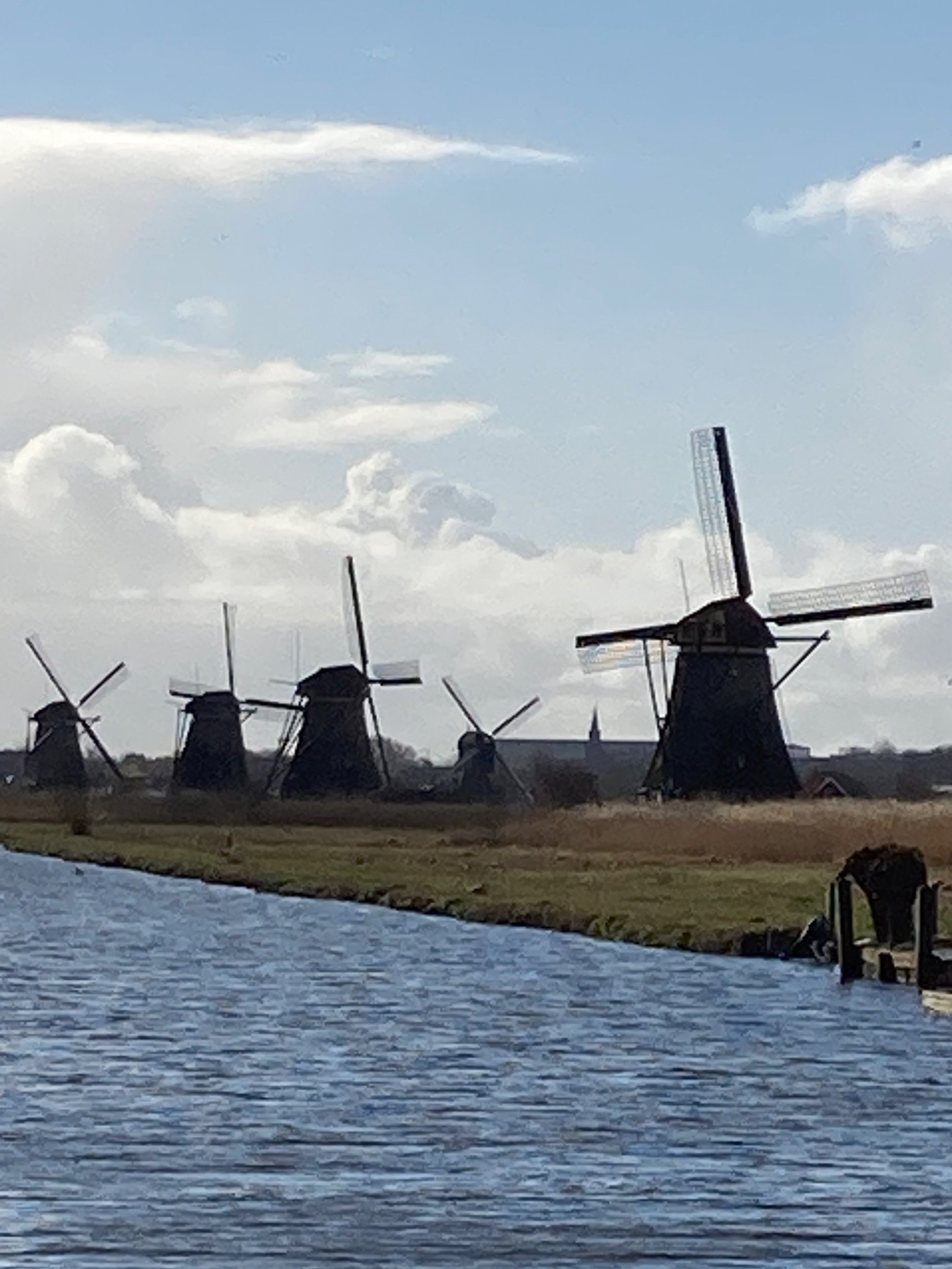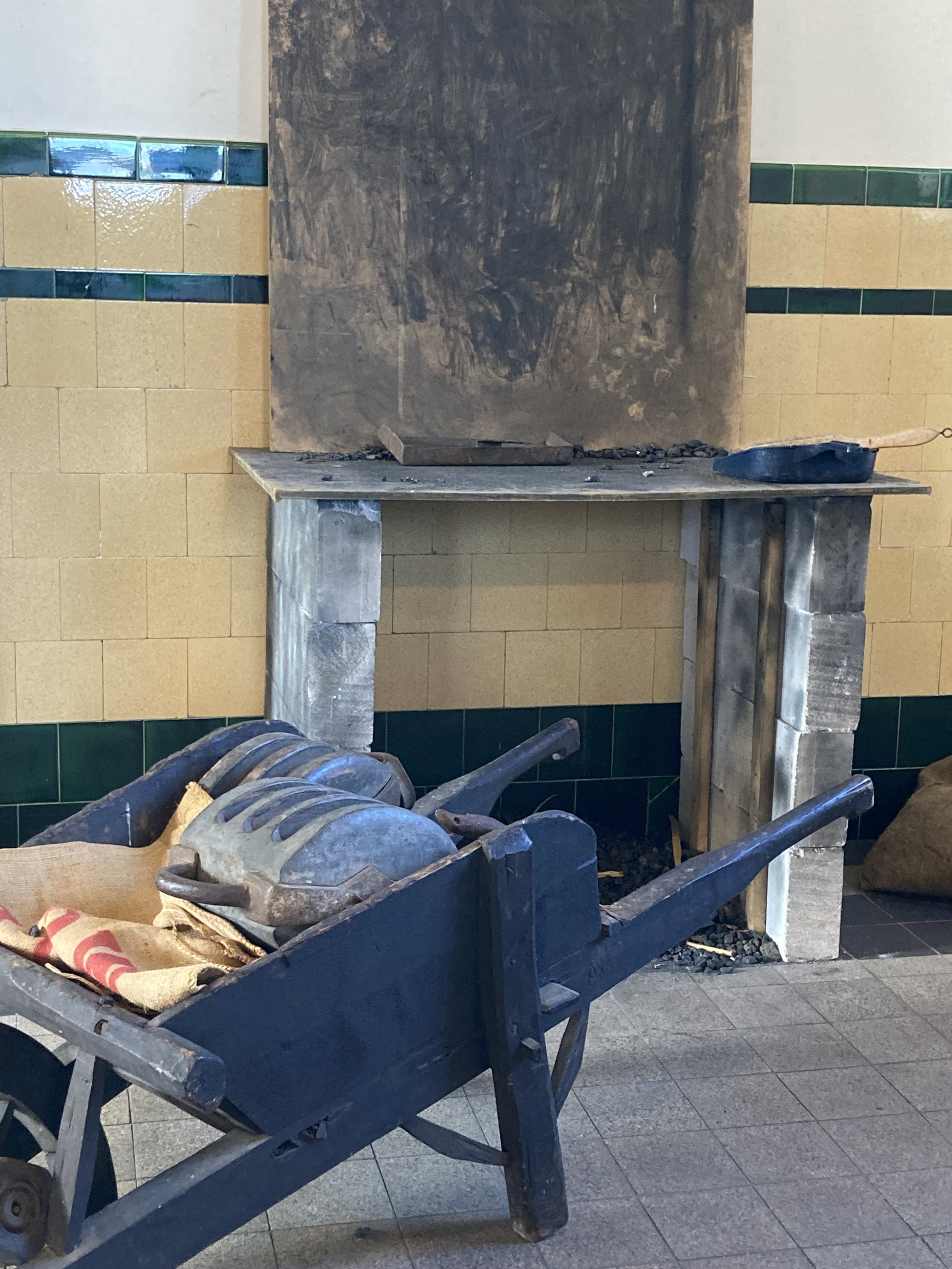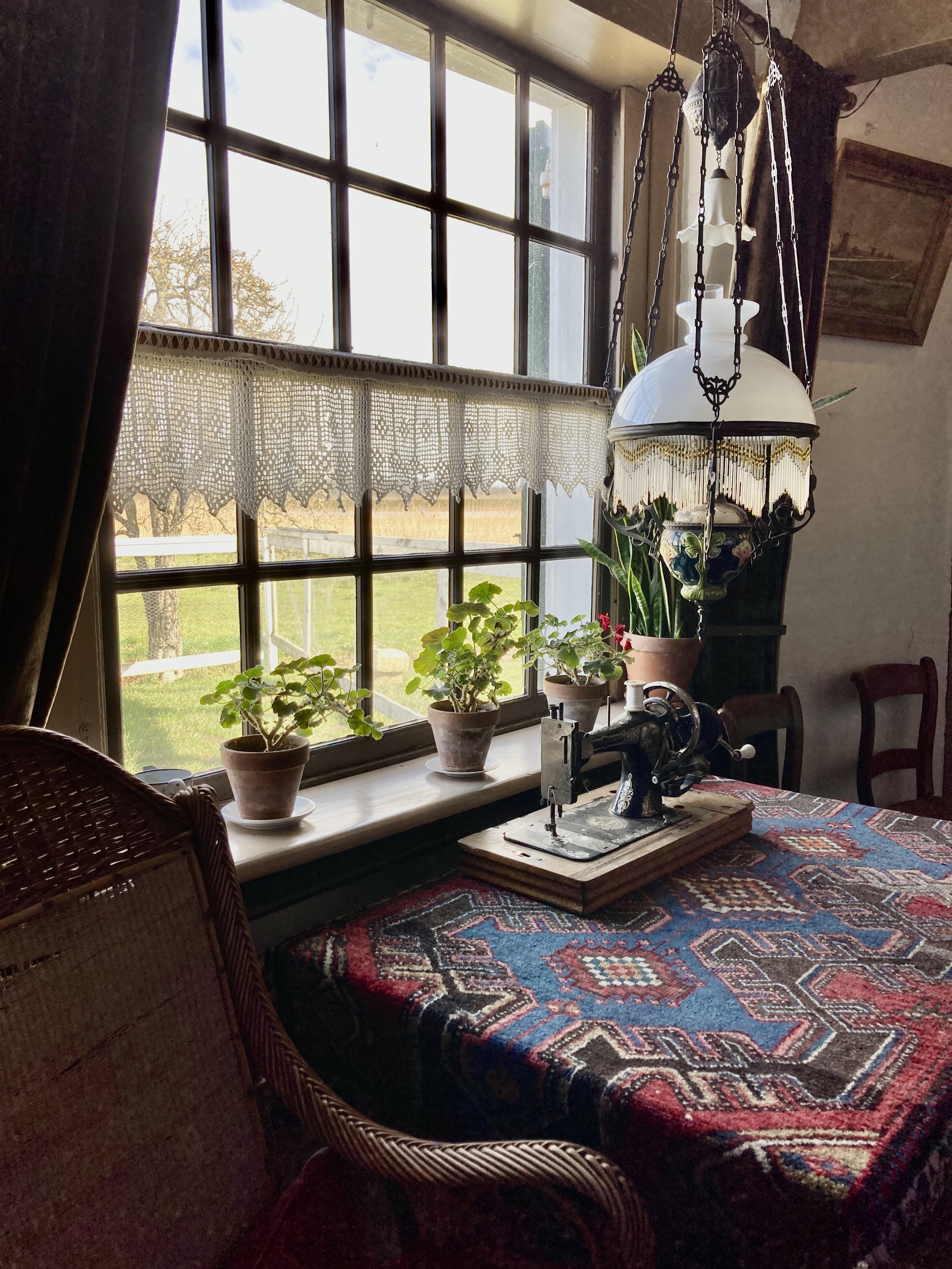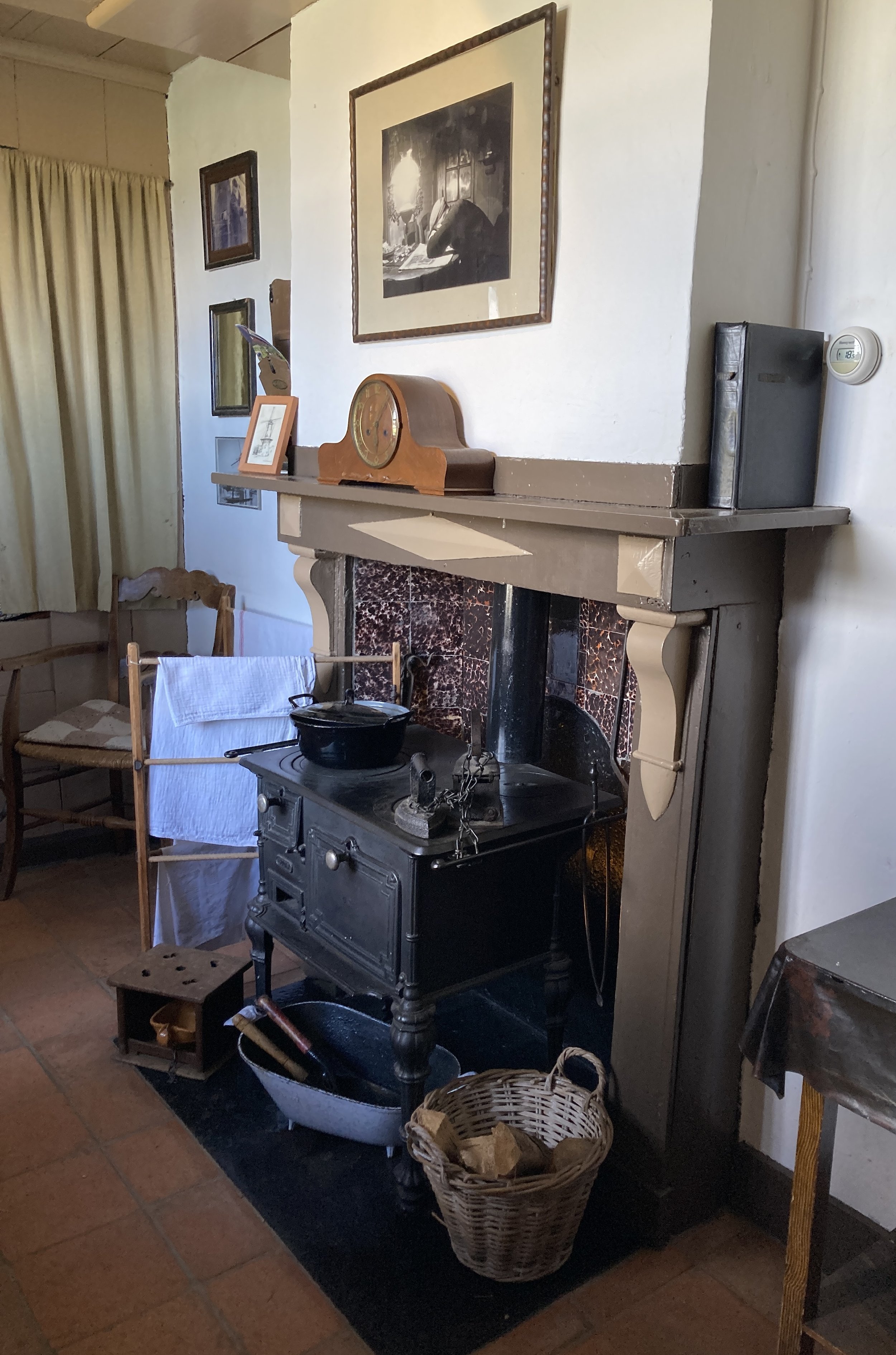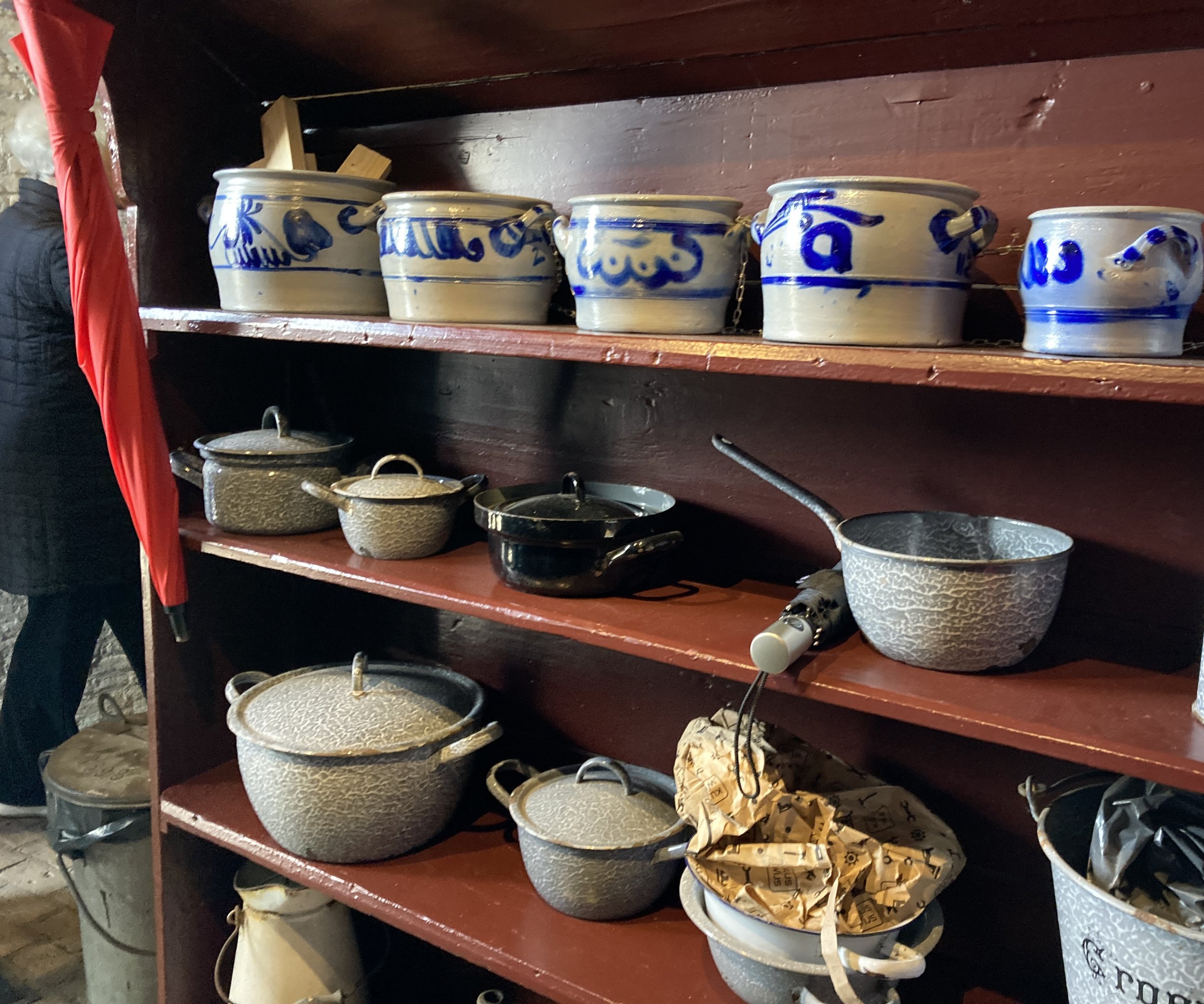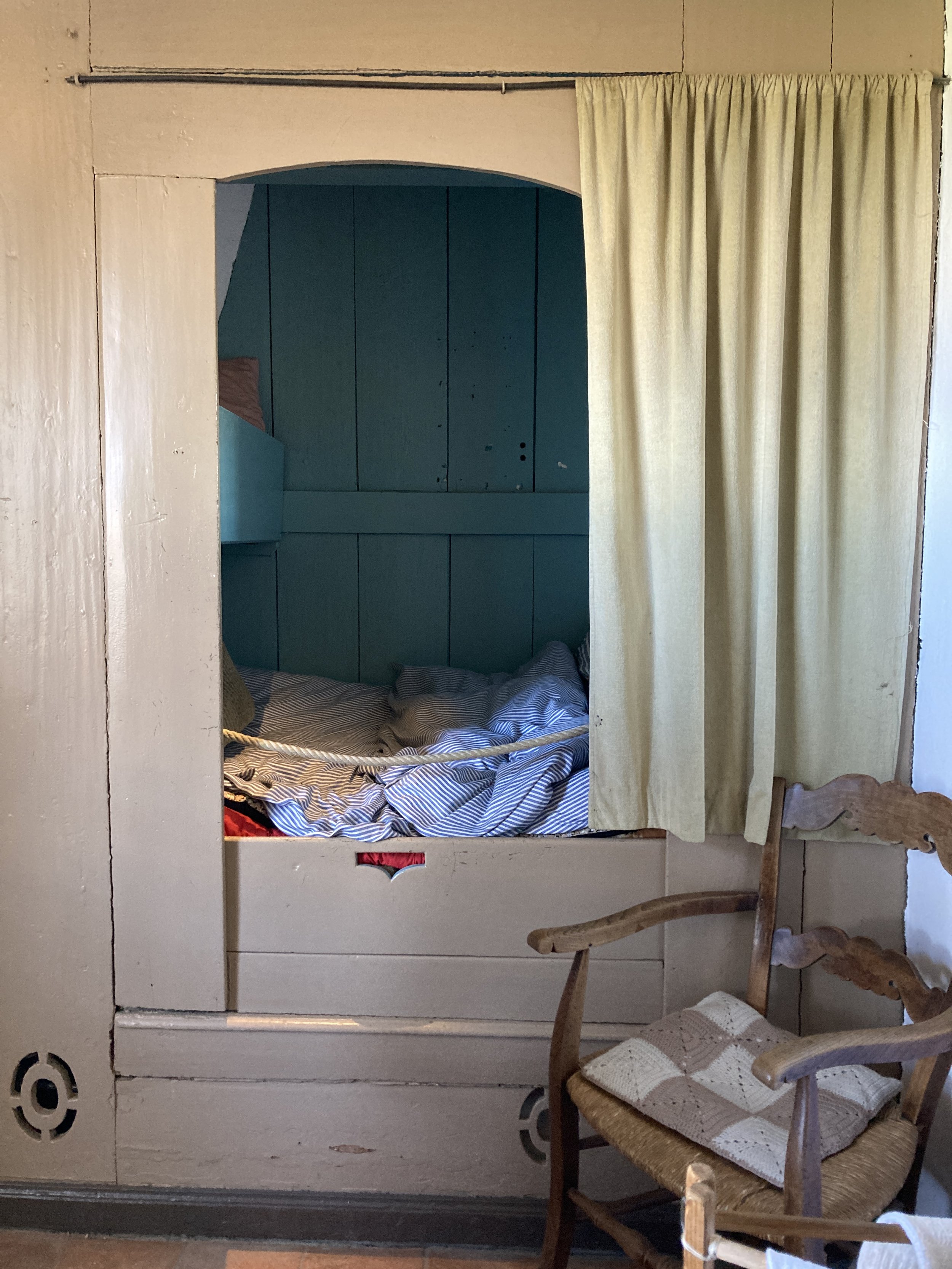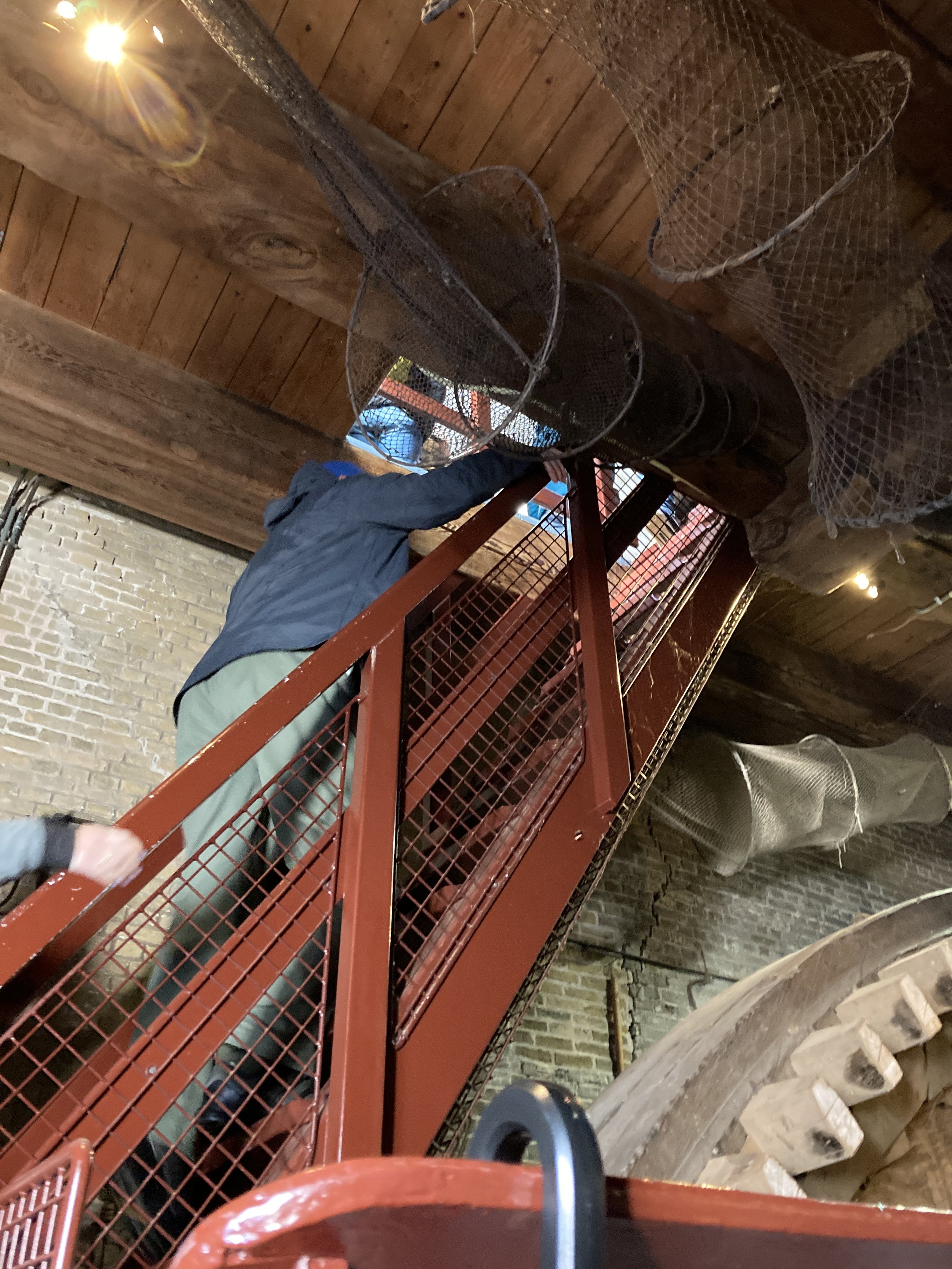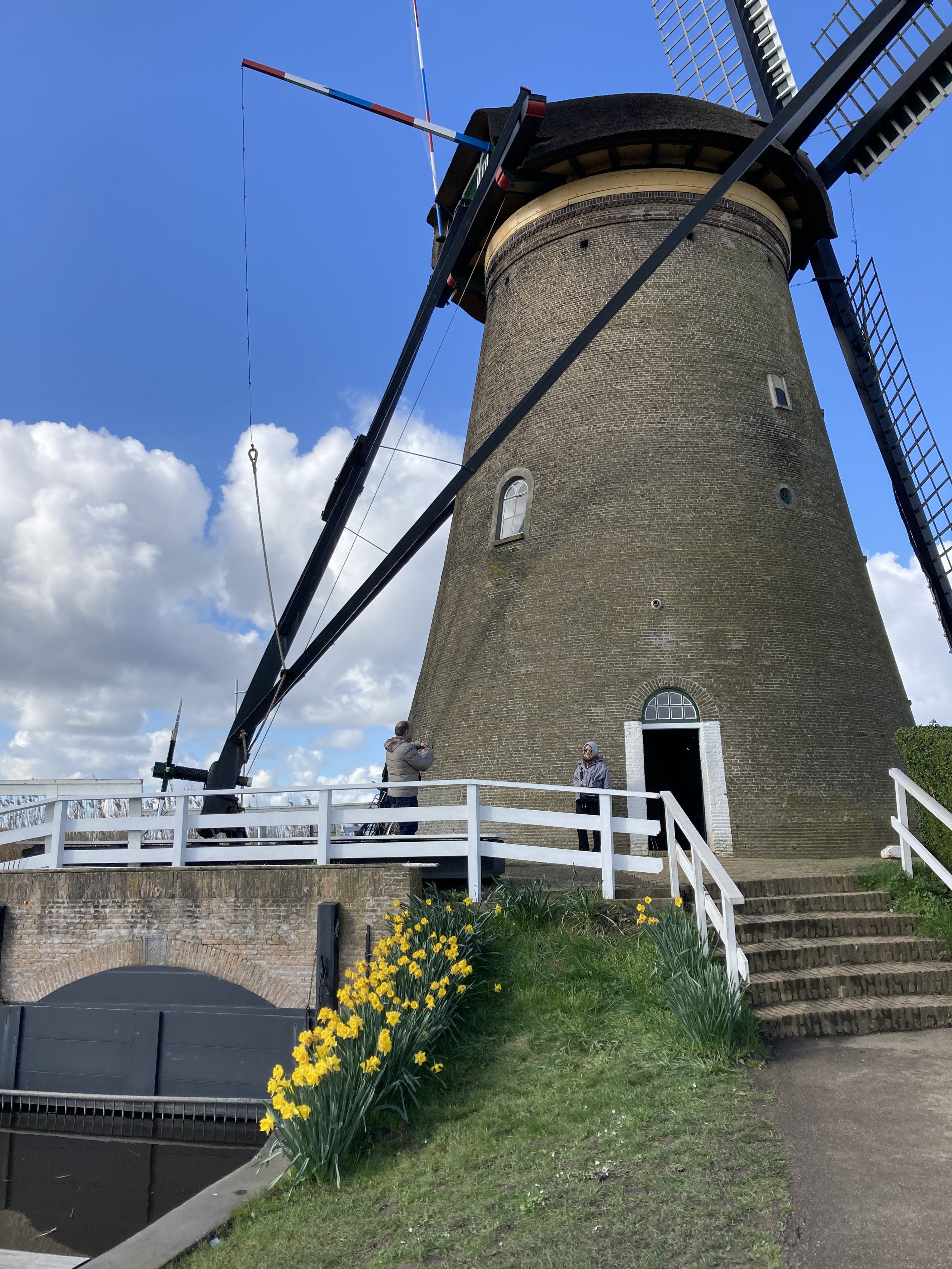The Windmills of Kinderdijk
A river cruise along the Rhine River, from Amsterdam in the Netherlands to Basel in Switzerland, passes through beautiful scenery and stops in fascinating places. Over the next weeks I will write about some of those stops, beginning today with one of my favorites – Kinderdijk.
The Viking Baldur sailed out of Amsterdam at 11 pm on day one of the cruise and arrived in Kinderdijk the next morning just after breakfast. It was an easy walk from the spot where the boat docked to this unique UNESCO Heritage site, famous for its 19 historic windmills.
Any visit to Kinderdijk begins with the story related to its name which means “Children’s Dike” in Dutch. The story goes something like this – way back in the year 1421 a huge flood brought destruction and many deaths to the area. A little boy went to check the dike (not the famous Hans Brinker but a different boy altogether). The boy found a cat atop a cradle floating in the flood waters. Inside the cradle was a baby girl. And so, we have the name Children’s Dike. Another version of the story pre-dates the flood and is a bit more specific. The baby was named Honigje. She had been cared for by a midwife and her cat named Dubbeltje. It was this cat who saved the baby from flood waters. The legend was explained in the Viking Daily, an on-board newsletter provided each day with tidbits of information about the various stops along the cruise.
Viewing the windmills from a small canal boat was an optional excursion at this stop.
The local tour guide for our morning at Kinderdijk was a very tall Dutch gentleman who had grown up in the area. If you’ve never experienced Dutch humor and frankness, then I will simply say that it is an added bonus during the visit. We all had a laugh when he warned us about not stepping in goose droppings by saying “watch out, there’s a lot of goose sh*t around”. Oh, those plain-spoken Dutch! We tried not to laugh, really we did, but it was impossible!
The visit began in the gift shop where a model of the area provided an explanation of how the windmills worked together to pump water from the below-sea-level lands up to the drainage canals. This was also made clear by the fact that our ship, which was docked on the river, sat well above the lower lands of Kinderdijk. Attached to the gift shop building was an area with old tools along with huge mechanical equipment – pumps that later were added to make the process of moving water much more efficient that doing so with the windmills alone. Of course there were also souvenirs to purchase.
A small educational building provided a chance to listen as our guide demonstrated the wooden structures used in the oldest windmills.
At Kinderdijk the windmills date back to the 1700’s, among the oldest in the Netherlands. Our guide also discussed how the windmills work and the changes that occurred over time as construction changed from wood to iron. This brief introduction made the next stop, a visit to the interior of a windmill, much more valuable.
The windmills at Kinderdijk functioned to keep the land from being submerged. They also provided a home for the keeper of the windmill and his family.
The day of our visit was quite cold and windy. Despite that, the small home inside the windmill was cozy. The table sat beside a pretty window, the wood stove stood ready to cook a meal, and the china cabinet was full of pretty painted pieces. The bed, tucked inside an alcove in the single main room of the home, looked warm and inviting. There is something intriguing about the glimpse into a very different way of life that a visit to a furnished home provides.
The more adventurous in our group climbed the ladder into the upper workings of the windmill while some of us kept our feet on the ground exploring the big wooden wheels that drove the windmills and seeing the sails (blades) of the windmill from below.
An interesting tidbit – the position of the sails also served to send messages, including warnings of imminent visits from Nazis during World War II.
This early spring cruise was a bit too early to see the famous Dutch tulips of the area. Instead, there were lovely yellow daffodils in bloom, tall graceful grasses, budding trees and some pretty dramatic skies.
The windmills of Kinderdijk made for a perfect first stop on this week-long cruise. Coming up, stops along the Rhine in Germany and France.
